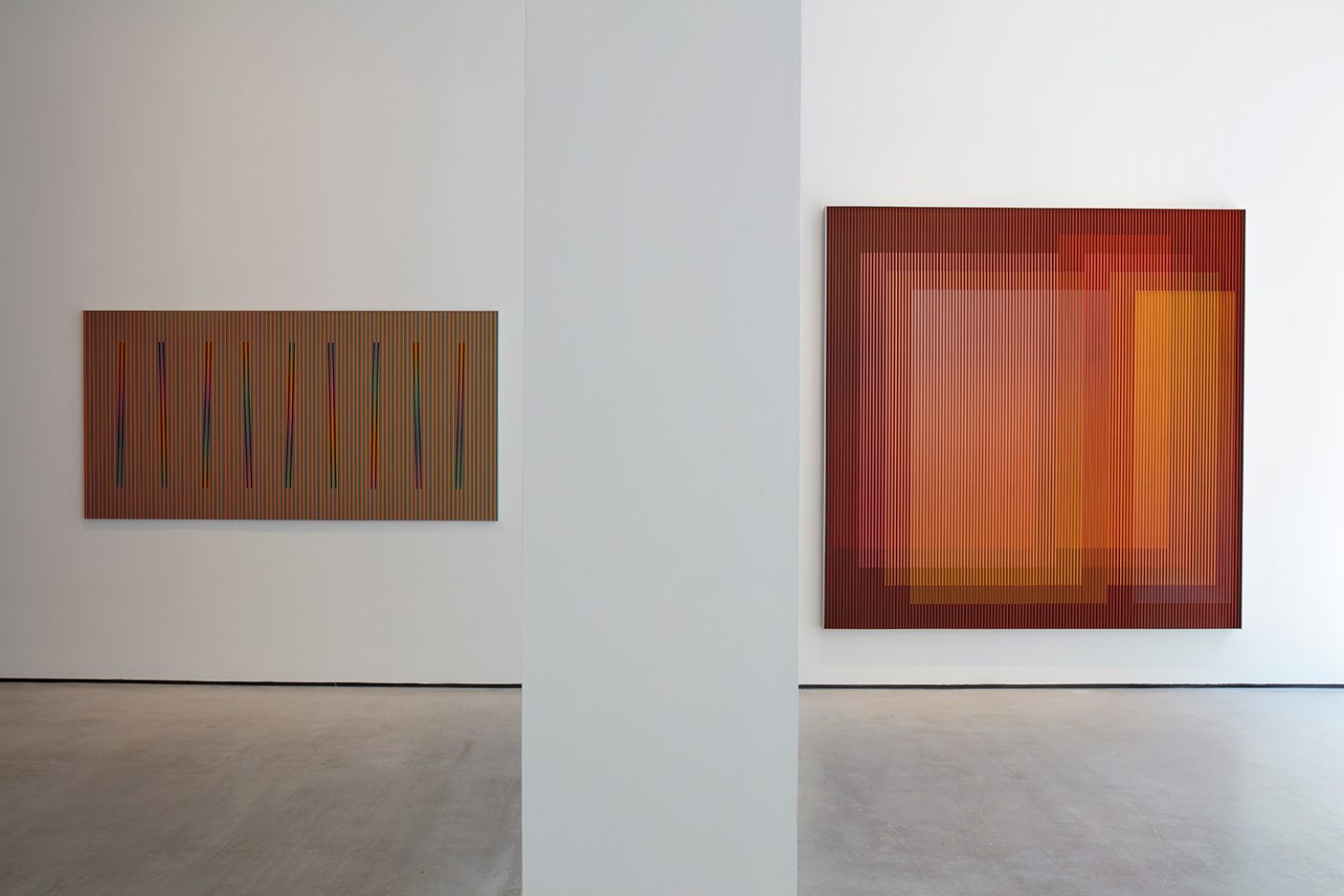Enrico Castellani
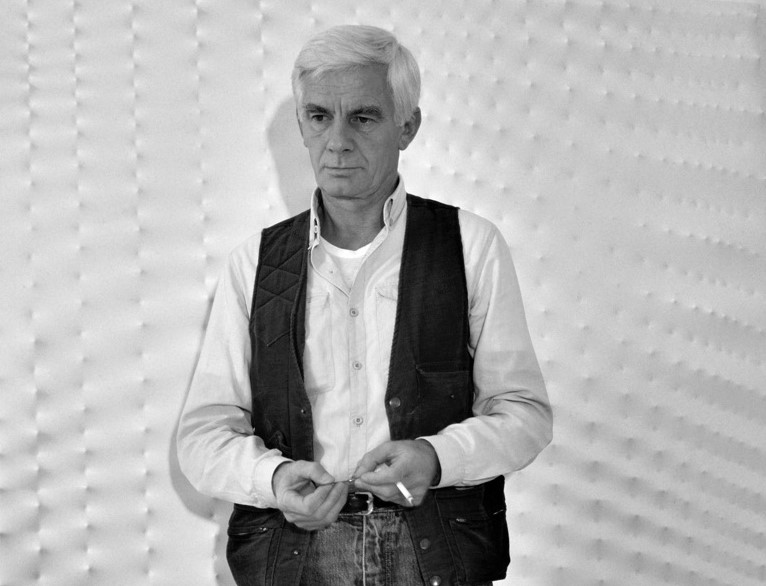
Enrico Castellani, 1970. © Aurelio Amendola.
Enrico Castellani, born in Castelmassa, Rovigo, in 1930, was one of the great protagonists of post-war Italian art. In 1952, he moved to Brussels to attend painting and sculpture class at the Académie des Beaux Arts In 1956, he graduated in architecture at the École Nationale Supérieure de la Cambre. The following year he returned to Italy, settling in Milan and becoming an active component of the new artistic scene.
In 1959, together with Piero Manzoni and Agostino Bonalumi, he founded the magazine “Azimut” which proposed the total elimination of the previous artistic experience and a new beginning, and fully centered on the concept of abstraction. This zeroing was achieved with the use of monochromatic canvases with various techniques, to create effects of iridescent lights and shadows with the inclination of the light source. The study and analysis of the possibilities offered by the bending of the canvas through the use of nails and ribs gave life to Castellani’s stylistic code that critics defined as “different repetition” from the careful repetition of full and empty spaces given by rhythmic extrusions of the canvases, constituting an unparallel new path.
The work of Enrico Castellani transcends the boundaries of painting to incorporate the concepts of sculpture and architecture, with the aim of exploring and presenting a new plastic paradigm. Committed to redefining art to align with contemporary concerns, Castellani integrates light, space, and movement into his pieces through the use of various materials, transcending the flat surface of the canvas.
Selection of works
En este momento nuestra web está cambiando de look, disculpe las molestias.
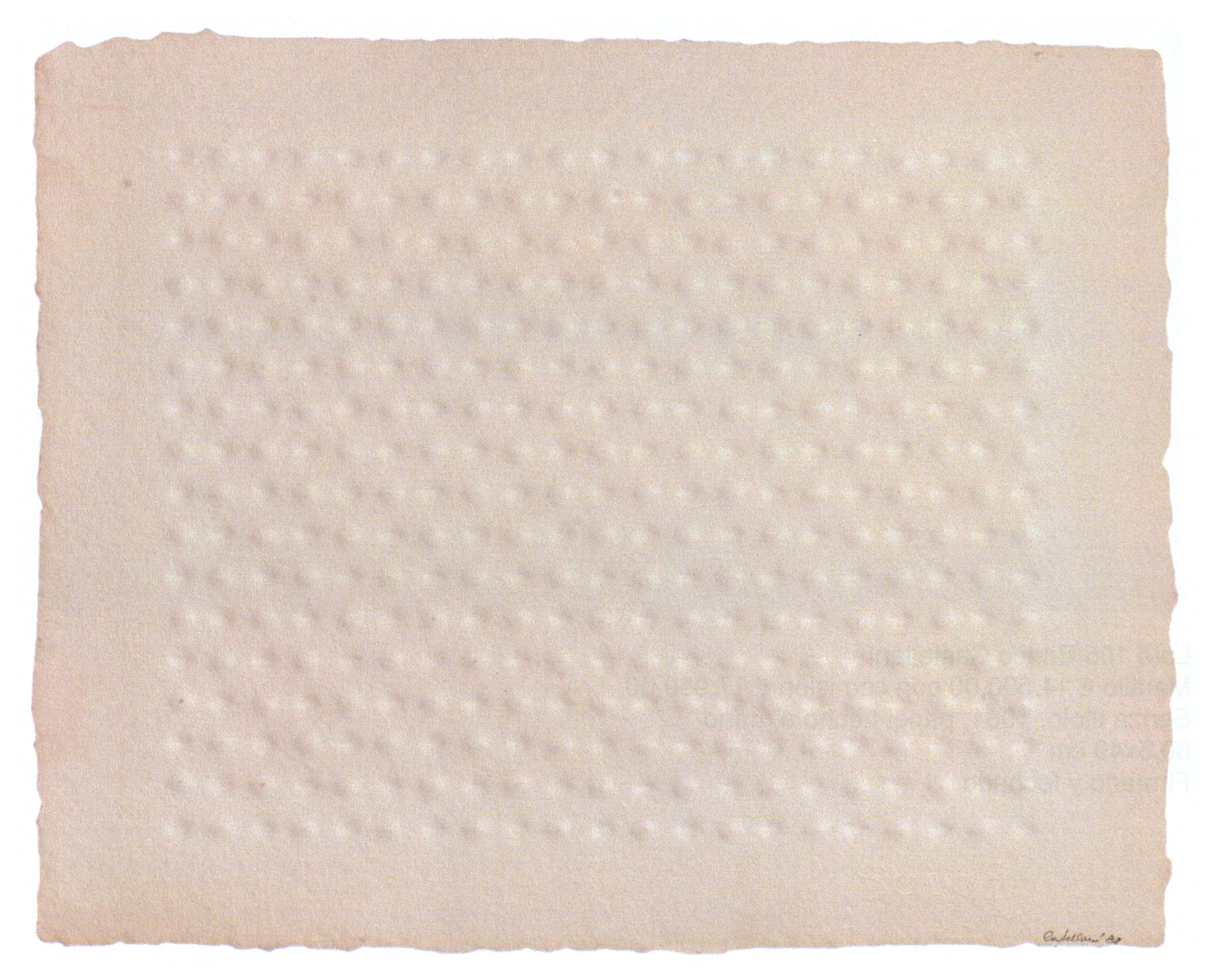
Senza titolo, 1988
43 x 53 cm
CA001
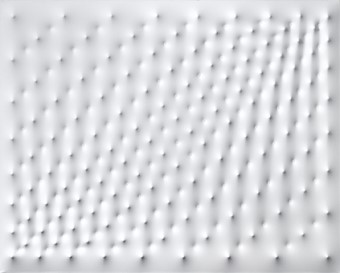
Superficie bianca, 2012
80 x 100 cm
CA026
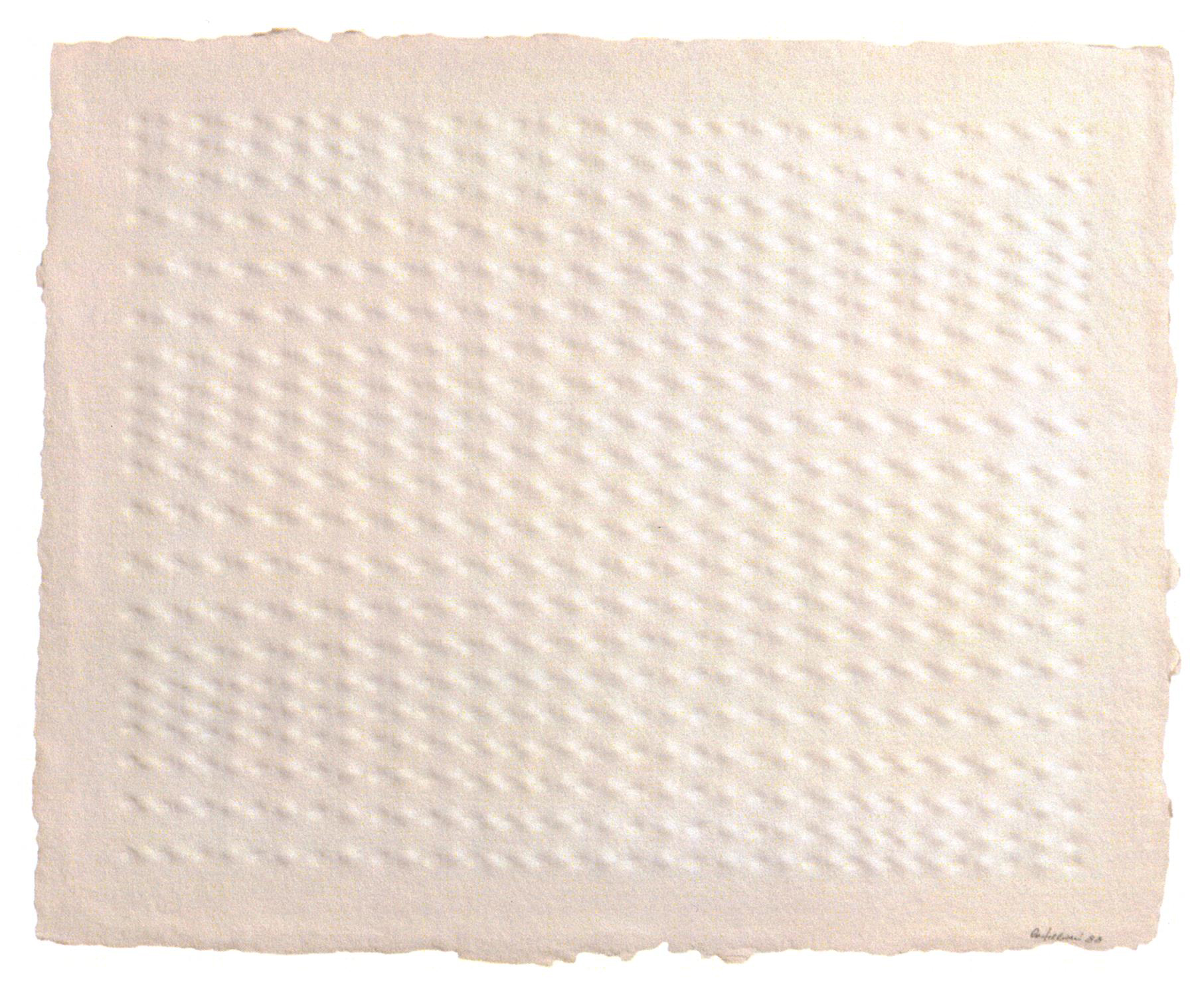
Senza titolo, 1988
43 x 53 cm
CA003
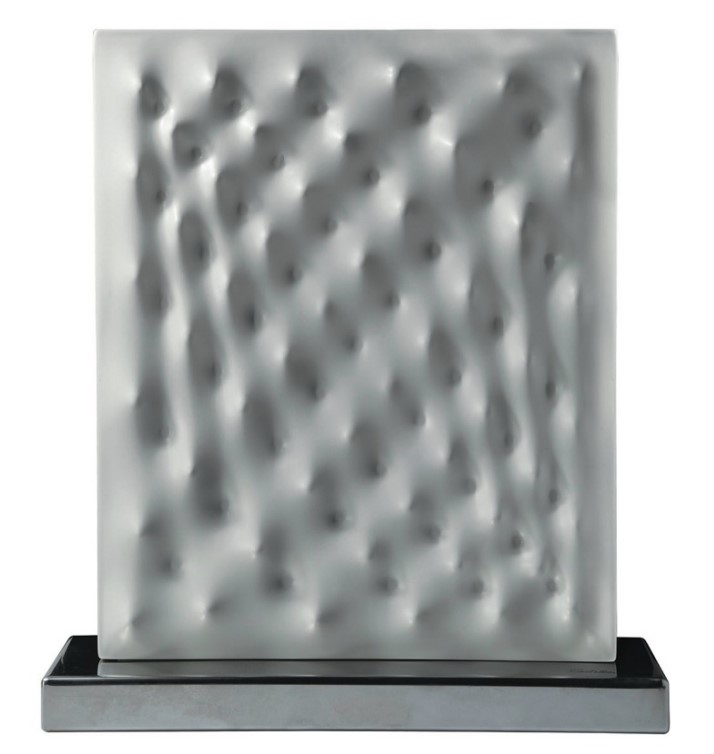
Superficie bianca, 2012
51.5 x 44 x 12 cm
CA040
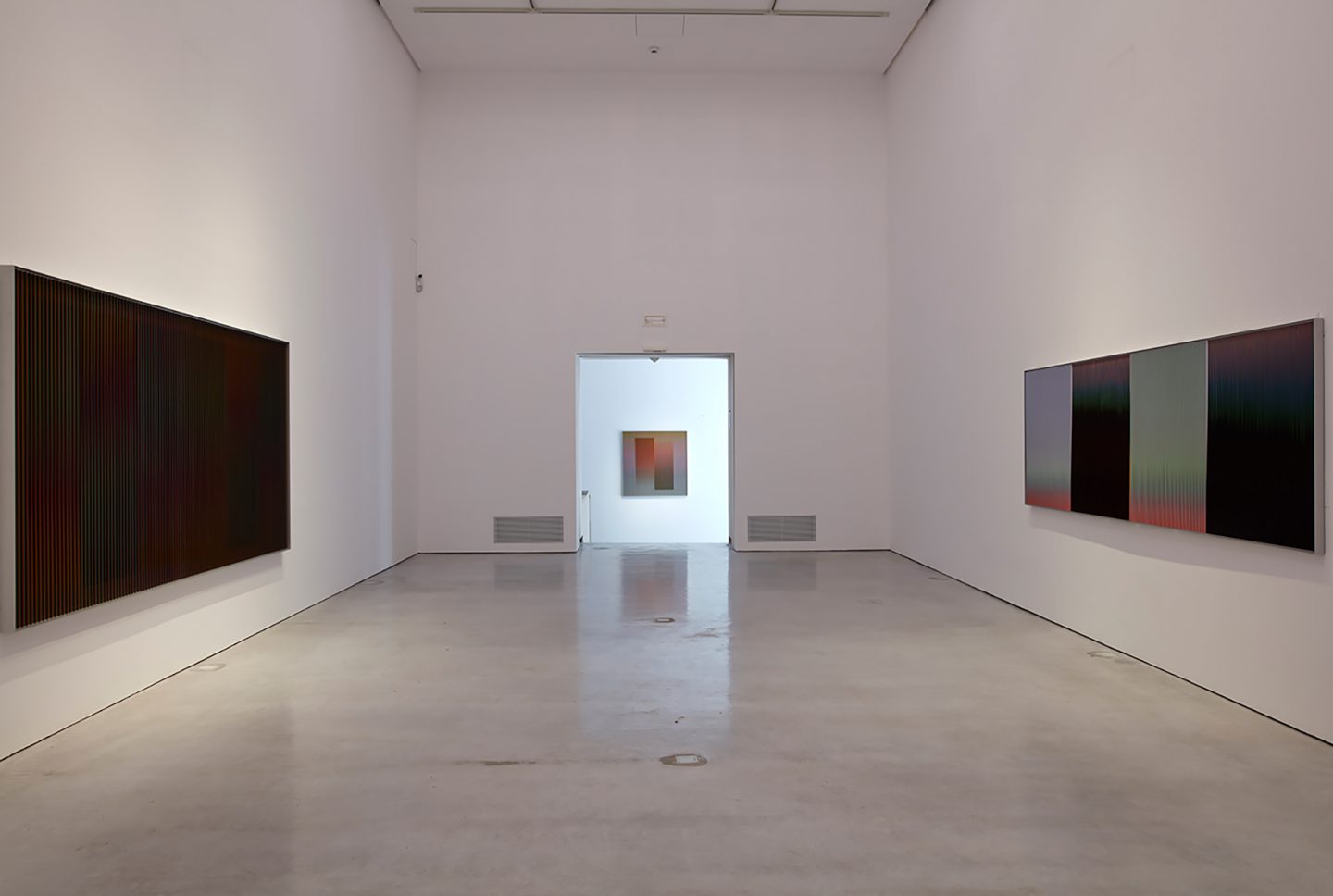
"Cruz-Diez", Cayón, 2016.
